We may receive a commission when you use our affiliate links. However, this does not impact our recommendations.
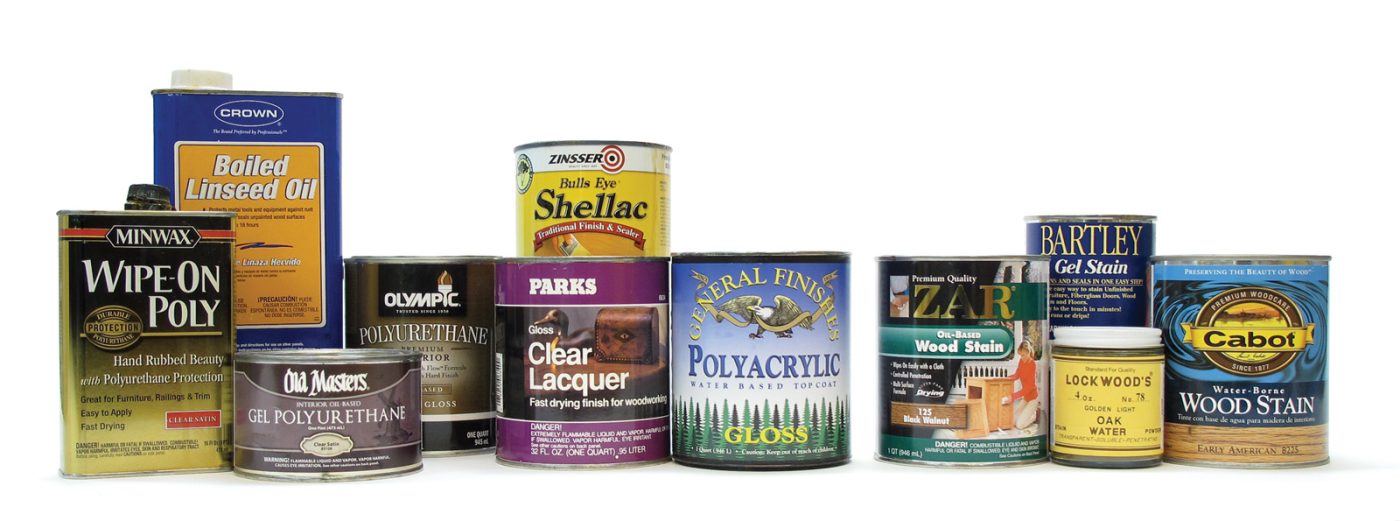
Stains & finishes. When your goal is to complete your finishing in a day or less, the critical feature you’re looking for is speed of drying. Common types of finish you might use are arranged on the left and common types of stain on the right.
The key to a quick finish is the finish you choose.
Finishing is seldom the most enjoyable part of woodworking, so many woodworkers want to get it over within a day – or even an afternoon. Many manufacturers encourage this with their directions, which often produce less than optimal results because they push the process too fast.
Nevertheless, there are ways to accomplish the entire finishing process (after the sanding) within a day or less. Here’s how.
The Need for Two Coats
To begin with, it’s important to emphasize that you can’t get good results with just one coat of finish. A minimum of two are necessary, including sanding the first coat after it has dried, to develop the full sheen (degree of shine).
The first coat of finish soaks in, raises the grain of the wood a little (a lot with water-based finishes) and locks the raised grain in place upon drying. The surface not only feels rough, it appears duller than it is supposed to because the finish film is too thin and the raised grain breaks up the light reflection.
You need to sand this first coat smooth and apply a second to achieve the desired sheen. Use a sandpaper grit that achieves smoothness efficiently without cutting deeper than necessary. In most cases, #220, #320 or #400 grit.
So the biggest consideration involved in getting all your finishing done in a day or less is the drying time of the finish you’re using. There has to be enough time for the first coat to dry so you can sand and apply the second coat.
Oil & Varnish
With the exception of gel varnish, the slow dry time of oils and varnishes (including polyurethane varnish and wiping varnish) pretty well eliminates them as possibilities. You’d have to apply the first coat very early in the day to allow enough drying time so you could sand and apply the second coat late. And you’d have to be working in a warm location. (That speeds drying.)
Gel varnish dries faster than other varnishes, so there’s usually time to apply two coats in a day. But two coats of gel varnish aren’t enough to develop the full sheen because what remains after wiping off the excess is too thin.
A problem with all of these finishes is that they continue to put off a fairly strong odor for several days after they are dry to the touch, so even though you may call the project complete after just one day, you’d probably want to wait a few days to put it into use.
Lacquer & Shellac
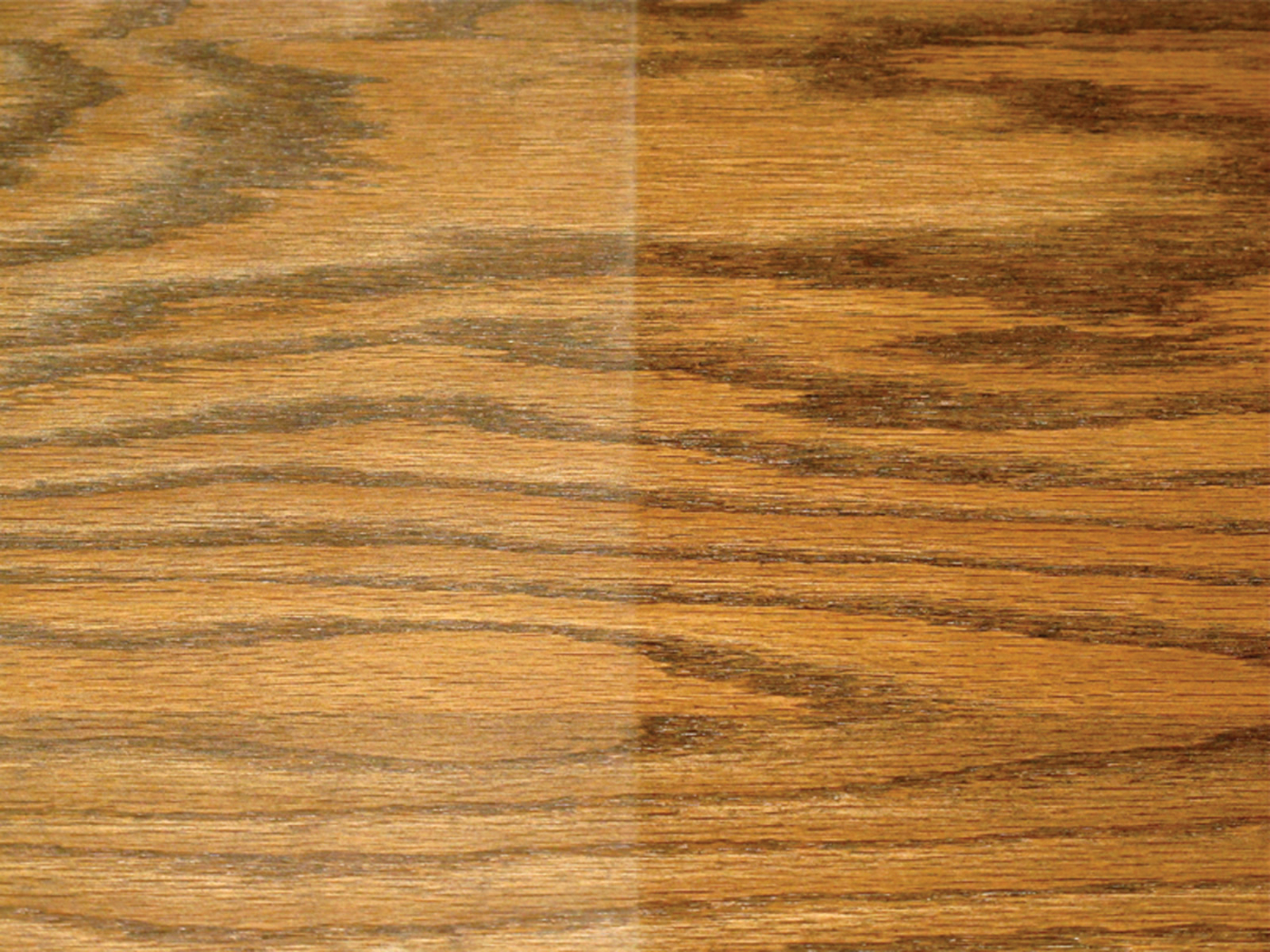
Two coats necessary. To develop the full sheen of a finish, a minimum of two coats are necessary, with the first sanded after it has dried. The contrast between one coat (left) and two coats (right) shows the difference.
Both lacquer and shellac dry rapidly because all that needs to happen for these finishes to dry is evaporation of the solvent: lacquer thinner or alcohol. So it would be easy to get two or even three coats applied in a day.
This may not be the case with “brushing” lacquer, however, which dries considerably slower than lacquer meant for spraying. (The act of spraying a finish with a spray gun or aerosol has no impact at all on the speed at which the finish dries.)
The big difference between lacquer and shellac is odor. Lacquer has a very strong odor for as long as it takes for all the solvent to evaporate. The odor of shellac is denatured alcohol, which is quite mild.
You could put a shellac-finished project into use fairly quickly, even the next day – as long as you’re not treating the surface roughly. But you may want to wait several days with lacquer.
Water-based Finish
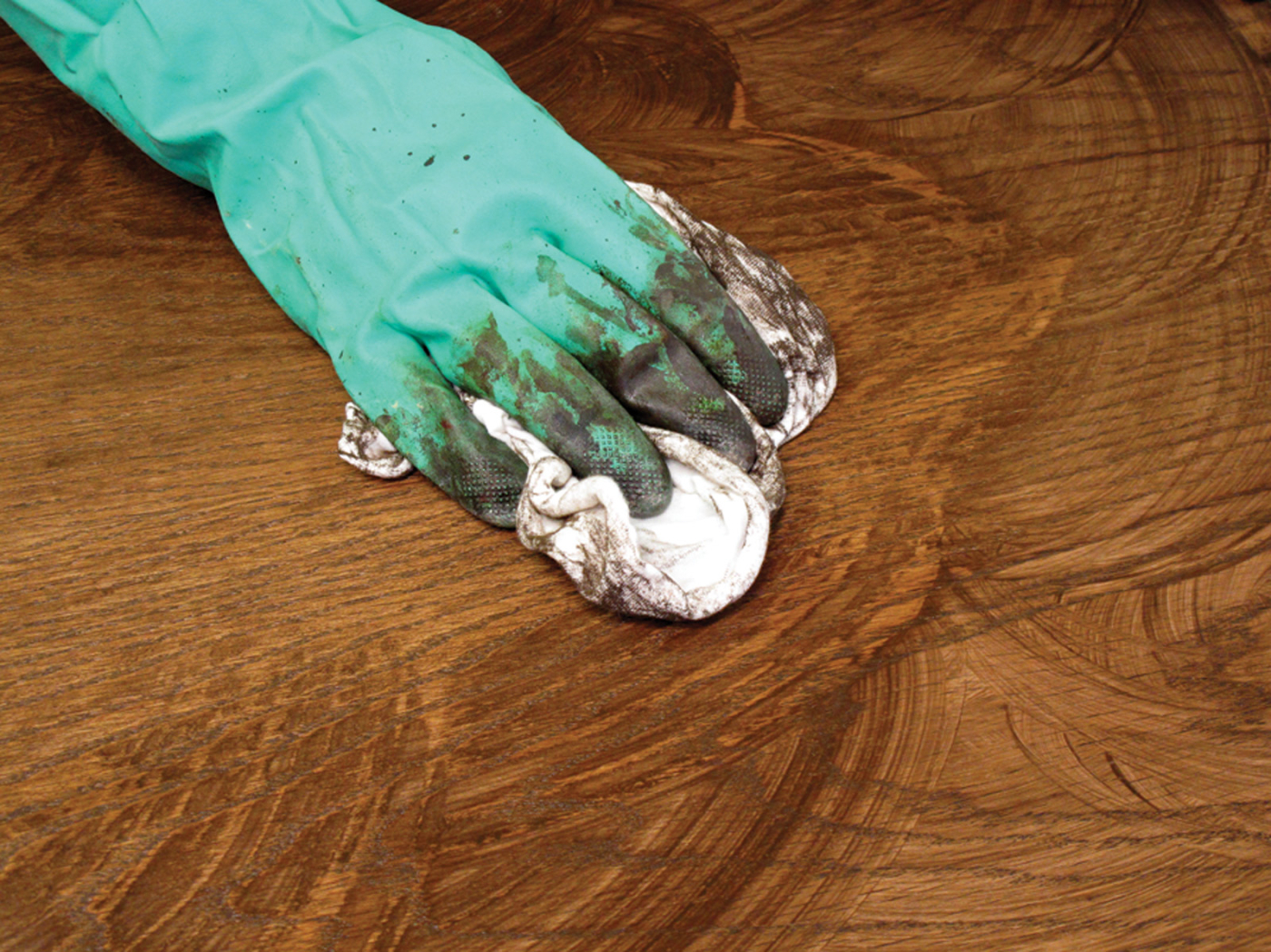
Rescue fast-drying stain. Water-based stains dry rapidly. On large and complex surfaces, you may have trouble getting the excess stain wiped off before it hardens (as shown in this picture). If this happens to you, quickly apply a wet coat of stain to smaller sections to reliquify the hardened stain and wipe off faster, or get a second person to wipe while you apply.
Arguably, the best choice of finish when you’re in a hurry is water-based finish (identified by the thinning and clean-up solvent, which is water).
Water-based finish, though relatively difficult to use, dries quickly and has very little odor. You could apply three coats easily in an eight-hour period (except in extremely high humidity) and put the object into service the next day. The finish won’t be as hard and scratch resistant as it will become after a week or so, however.
The problem with water-based finish that will slow you down a little is that the first coat raises the grain significantly more than with the other finishes. You’ll have to spend more time sanding the first coat smooth before continuing. Once you have done this, additional coats don’t have any grain-raising effect.
Staining
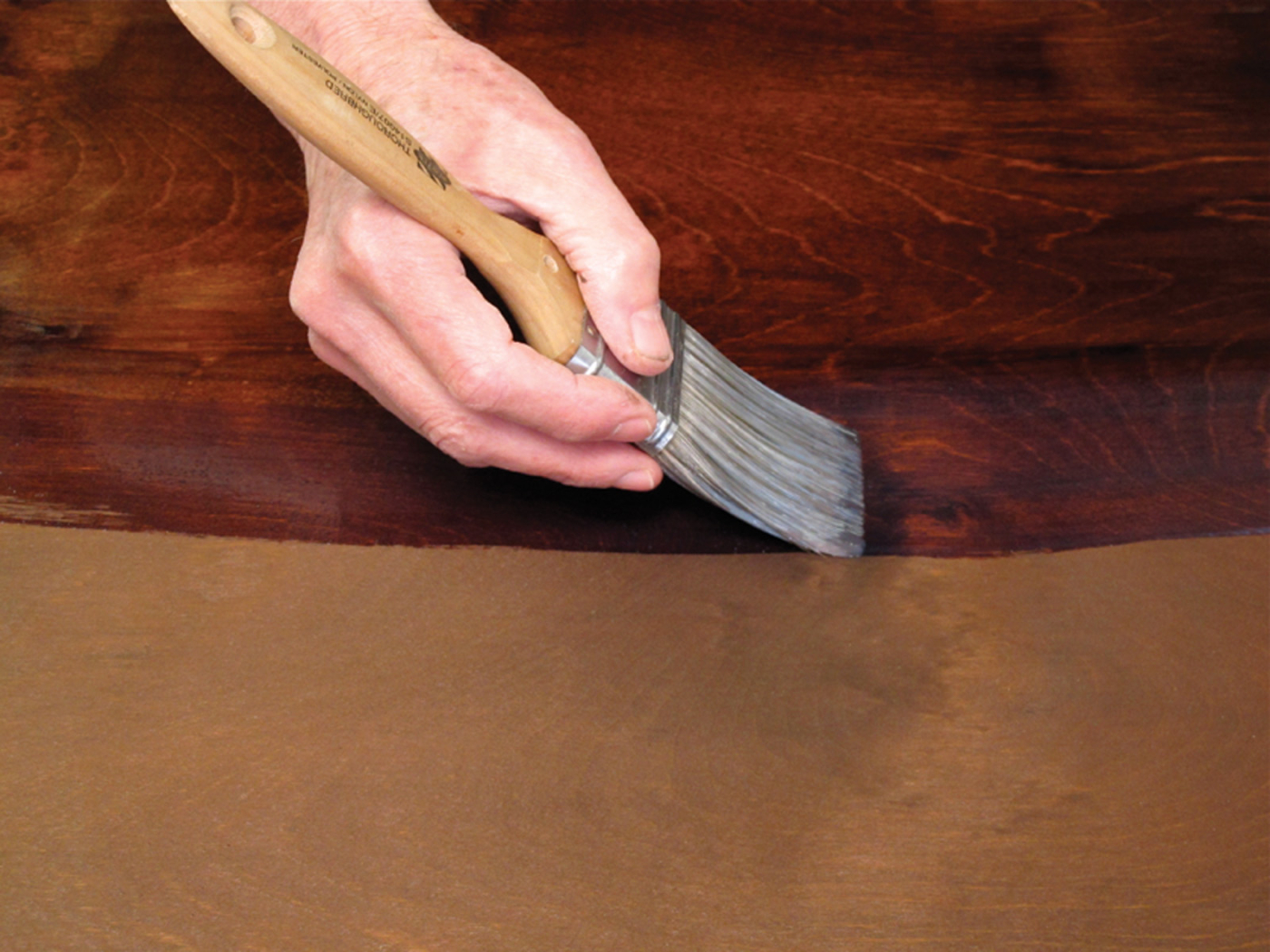
Water-soluble dye stain. A brushed water-based finish may redissolve a water-soluble dye stain and move the color around the surface, making some areas lighter and some darker. You need to “seal in” the dye with a sprayed first coat (for example, with an aerosol water-based finish) or with another finish (for example, a first coat of shellac).
There are four common possibilities for stains: oil-based liquid, oil-based gel, water-based liquid and water-soluble dye.
You won’t be able to complete your project in a day if you use an oil-based liquid stain. It should be allowed to dry overnight before continuing with the finishing steps.
In contrast, oil-based gel stains and water-based liquid stains dry rapidly, just like other gel and water-based finishes. So you should be able to get a project stained and apply two coats of finish in an eight-hour period.
There are two problems you should be aware of if you use a water-based stain. First, it dries very fast. If your project is large or complex, you may have trouble getting the excess stain wiped off before it begins to dry. This will leave a blotchy coloring. Applying the stain with a soaked cloth or sponge (or a spray gun) is more efficient than brushing. Having a second person wipe dry after you apply will also help produce good results.
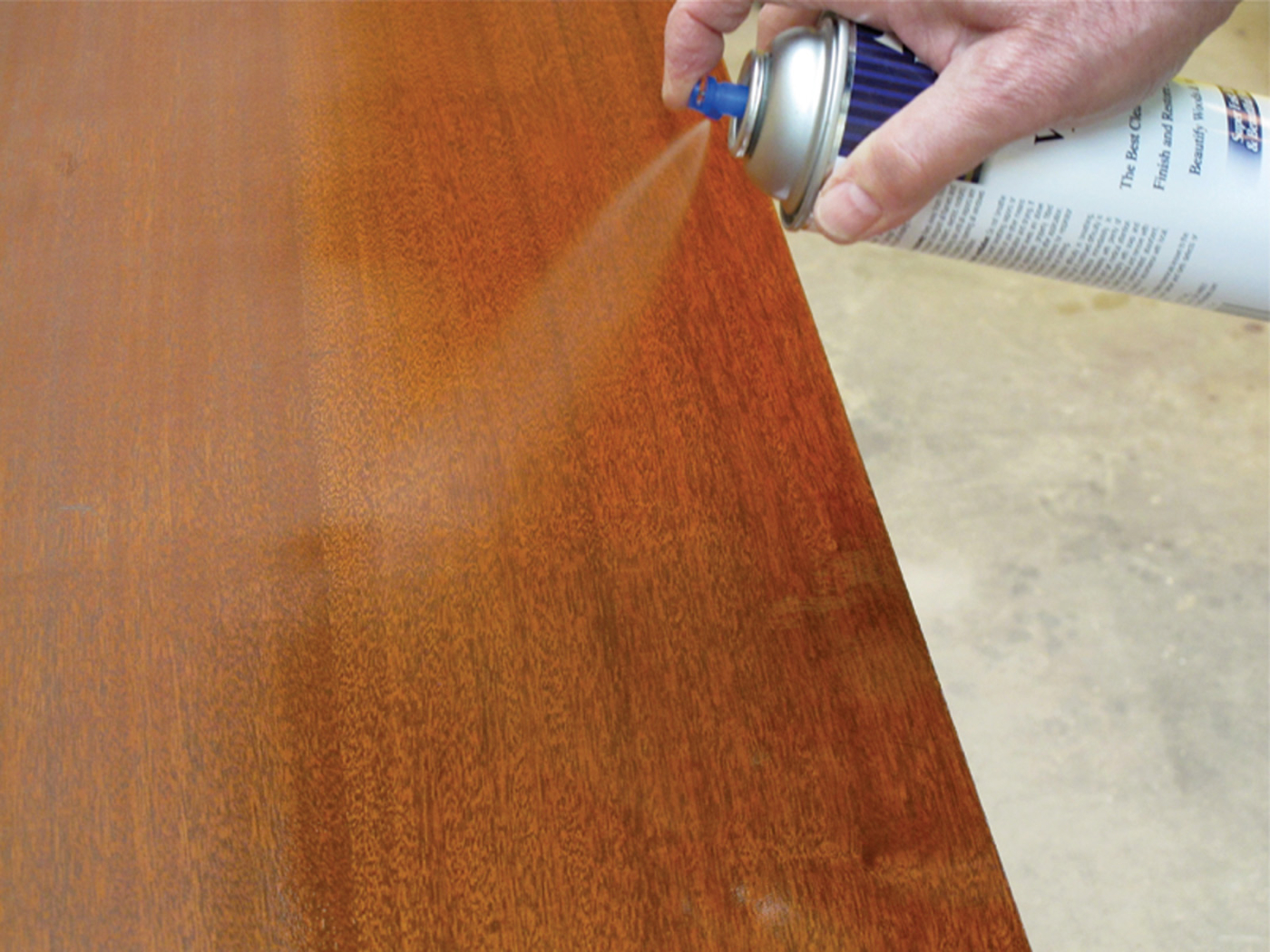
Spraying. Spray guns and aerosols have their advantages over brushing, but drying speed isn’t one of them. Each type of stain or finish has its own drying rate, no matter how it is applied.
Second, water-based stain raises the grain a lot. To avoid sanding off some of the color, especially on edges, wait until after you have applied the first coat of finish to sand. “Bury” the raised grain, then sand smooth.
Water-soluble dye stain, which contains no binder (finish), dries slower than water-based stain, which does contain binder. So you have more time to get the stain applied.
If you have wiped off the excess and the air is fairly dry, the stain should dry within three or four hours. This leaves enough time to apply two coats of fast-drying shellac, lacquer or water-based finish the same day.
But be aware that brushing water-based finish over water-soluble dye can lift some of the color and move it around the surface. It’s best to spray the finish, or seal the wood first with another finish – for example, shellac. PWM
Bob Flexner is author of “Flexner on Finishing” and “Wood Finishing 101.”
Here are some supplies and tools we find essential in our everyday work around the shop. We may receive a commission from sales referred by our links; however, we have carefully selected these products for their usefulness and quality.








